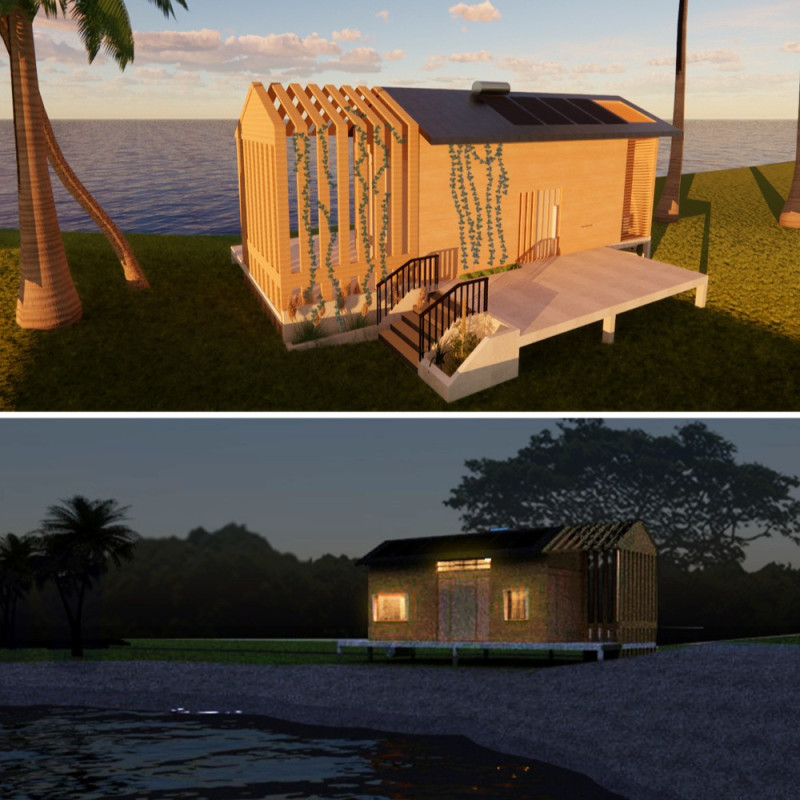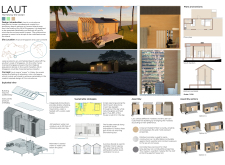5 key facts about this project
## Overview
**Project Title:** Laut: Homes by the Ocean
**Site Location:** Lazarus Island, Singapore
**Design Purpose:** Laut is conceived as a microhome providing temporary accommodation for professionals working on Lazarus Island. The design emphasizes sustainability, intending to create an off-grid living space that harmonizes with the coastal environment.
Lazarus Island, located off the southern coast of Singapore, is predominantly uninhabited, offering a contrast to the densely populated urban landscape of the region. By fostering a connection to the natural surroundings, Laut aims to embody the essence of relaxation associated with coastal living, drawing inspiration from the Malay word "Laut," meaning "ocean."
## Design Elements and Materiality
The architectural framework incorporates modern materials selected for their environmental performance and structural resilience. Cross-laminated timber (CLT) serves as the primary structural component, emphasizing rapid assembly and durability. Polished concrete is employed for patios, chosen for its weather resistance, while concrete tiles on the roof provide longevity and protection against heavy rainfall.
Sustainable water management practices include rainwater harvesting systems and atmospheric water generation technology, enabling the production of potable water on-site. Solar integration is achieved through photovoltaic panels, designed to generate surplus energy, supporting the home's off-grid status.
## Spatial Configuration
The design optimizes natural light and air circulation through extensive openings oriented along the North-South axis, ensuring that approximately 89% of interior space is daylit. Essential living areas, including a kitchen and bathroom, are thoughtfully arranged to maximize functionality while minimizing spatial waste.
Interior finishes combine aesthetic simplicity with durability, utilizing smooth timber panels that complement polished concrete features. The porous facade enhances ventilation, addressing humidity and temperature concerns while facilitating natural airflow within the home.
Emphasizing modularity, the design allows for customization to meet user preferences, fostering an adaptive living solution conducive to temporary or seasonal occupancy. Additionally, the project incorporates local cultural elements, ensuring an authentic connection to the indigenous environment and landscape.


















































